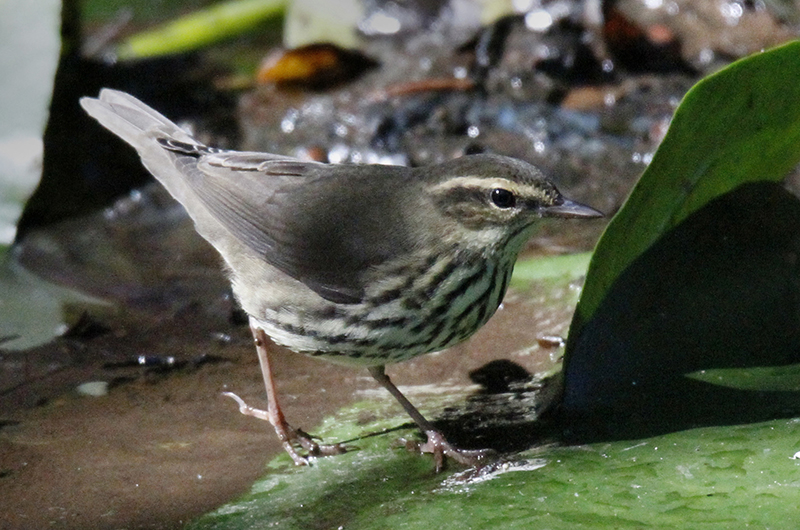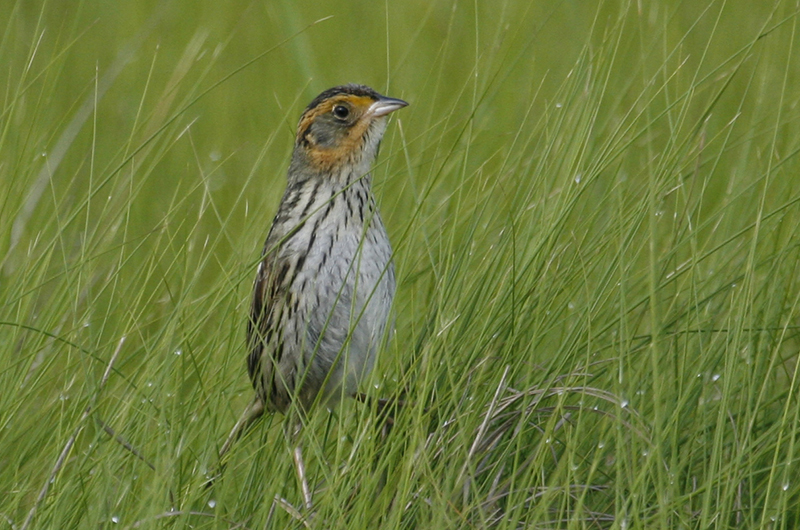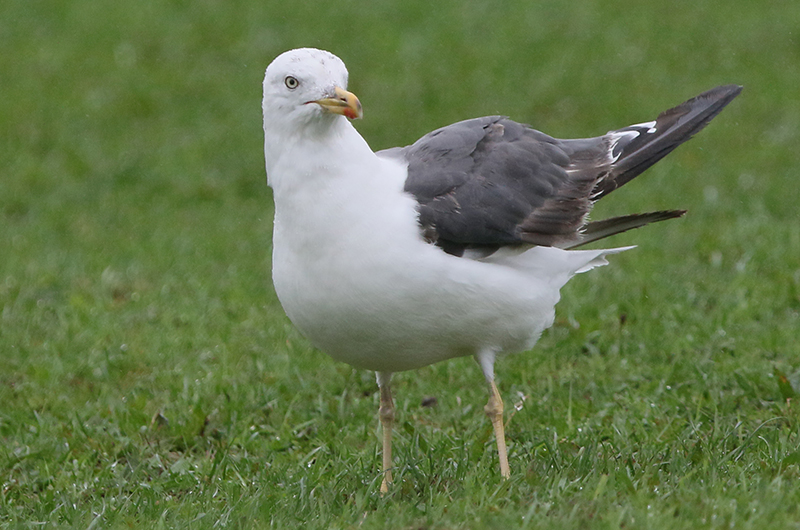Songbirds — those often colorful birds that perch on the ground or in trees and shrubs — are now starting their southward migration. They are no longer as conspicuous as they were a few months back on their northward migration; then they sang but now they only make call notes. The males are no longer as colorful as they were back then and so can be more difficult to identify. But they still need to eat so they are just as active. And there are more of them now, as their numbers have swelled to include youngsters that fledged this year.
Until now, our songbird migration was characterized by the disappearance of breeding birds from their normal summertime haunts. These species, like the yellow warbler, tree swallow and American redstart, are still here but now they can be found in other places.
The northern waterthrush is a shy medium-sized greenish-brown warbler that usually remains concealed in wet woodlands, dense thickets and along streams. It does not breed on the Island and is one of the first of the northern species to move south. So Luanne Johnson’s sighting of a northern waterthrush on August 11, at the head of a brackish marsh adjacent to Major’s Cove in Sengekontacket Pond, is right on schedule. She heard the characteristic chip note and observed it for 15 seconds before it disappeared back into the thickets. It had a cream-colored head and chest markings and was constantly bobbing its tail: both are important characteristics for identifying this species.
Another early migrant is the red-breasted nuthatch, which was reported by two observers on the same day. Luanne Johnson heard and saw one in some pitch pines along Katama Road near the Farm Institute on August 17. And Tim Brew found one at the nearby Huckleberry Barrens. While this species used to nest here, they have been absent in recent years except for occasional sightings during migration. This species is a favorite of many birders, so hopefully these are only the first of many to come. Phillip Edmundson reports the third and fourth species of migrant songbird, a flock of more than 500 common grackles — yes, they are technically songbirds — that included at least six red-winged blackbirds on August 12 near Watcha Pond. Mixed-species flocks of that size are migrants. Bird Sightings
Songbirds that are not (yet) migrating are also in the news. Kathy May Waite observed a juvenile eastern towhee that was molting into its adult male plumage — black on its tail and lower back were beginning to show, as were the rufous siding to its belly. Otherwise, the bird was brown and white streaked, unlike either parent.
Several species of flycatchers are around too. Eastern phoebes have been reported by multiple observers: Luanne Johnson near Majors Cove on August 19 and August 15, Phillip Edmundson near Watcha Pond on August 17 and Caroline Emmet Heald at Chappaquonsett on August 17. Phillip Edmundson heard an eastern wood-pewee on August 17. Eastern kingbirds have been reported from multiple sites: Steve Allen at Felix Neck on August 16, Susan Whiting at Little Beach on August 14 and Tim Brew at the Farm Institute on August 12.
Phillip Edmundson reports a black-billed cuckoo, a red-eyed vireo and a yellow warbler at Watcha Pond on August 17. Also that day, Caroline Emmet Heald saw a prairie warbler at Chappaquonsett.
Steve Allen and Al Sgroi report two Baltimore orioles, five pine warblers, three yellow warblers and one brown-headed cowbird on their August 16 Early Birders Program at Felix Neck. On the opposite side of majors Cove from Felix Neck, Luanne Johnson spotted a saltmarsh sparrow on August 15.
The shorebird migration is peaking. Most notable are two whimbrels in a salt marsh at Simon’s Point on Chappaquiddick, spotted by Kiki Taron Kinney on August 19. These large sandpipers are quite distinctive with their long down-curved bills. Also notable is Luanne Johnson’s sighting of a pectoral sandpiper along the Majors Cove shoreline on August 11.
Black skimmers are accumulating on our beaches in record numbers. On Norton Point, a flock of 41 was observed by Susan Whiting, Lanny McDowell, Sarah Mayhew and Ruth Richards on August 16, and Susan Whiting added a flock of 10 skimmers at Little Beach on August 14. About half of the skimmers are young of the year.
Multiple spotted sandpipers have been reported: I saw two at Cedar Tree Neck on August 20, Phillip Edmundson observed one on the ocean beach at Watcha Pond on August 19, Luanne Johnson spotted several on Majors Cove on August 15 and 19, Walt Looney spotted one along the shoreline of Sengekontacket Pond on August 17 and Susan Whiting found one at Little Beach on August 14.
Common species of sandpipers and plovers observed include American oystercatcher, eastern willet, black-bellied plover, semipalmated plover, piping plover, ruddy turnstone, least sandpiper, semipalmated sandpiper, sanderling, greater yellowlegs, lesser yellowlegs and short-billed dowitcher. These species are reported from many locales around the Vineyard by multiple observers including Susan Whiting, Lanny McDowell, Sarah Mayhew, Ruth Richards, Phillip Edmundson, Luanne Johnson and me.
Green herons are widespread. Steve Allen spotted one at Felix Neck on August 20. Helen Penna found one at Menemsha on August 18, and on August 17 Sarah Mayhew and Ruth Richards observed three of them practicing their hunting skills near the Edgartown Bay Road boat launch ramp. Debra Luce found one on August 13. And speaking of herons, Danguole Budris spotted two great blue herons at Lambert’s Cove Beach on August 17.
One last natural history observation: we know that northern harriers eat mice. But that is not all they eat, as Sarah Mayhew photographed a northern harrier catching a large dragonfly on Norton Point Beach on August 17. Everything else eats insects at this time of the year, so why not a harrier?
Southbound migration is in full swing with many migrants passing through. Please report all your sightings to birds@mvgazette.com.
Robert Culbert leads Saturday morning Guided Birding Tours and is an ecological consultant living in Vineyard Haven.











Comments
Comment policy »